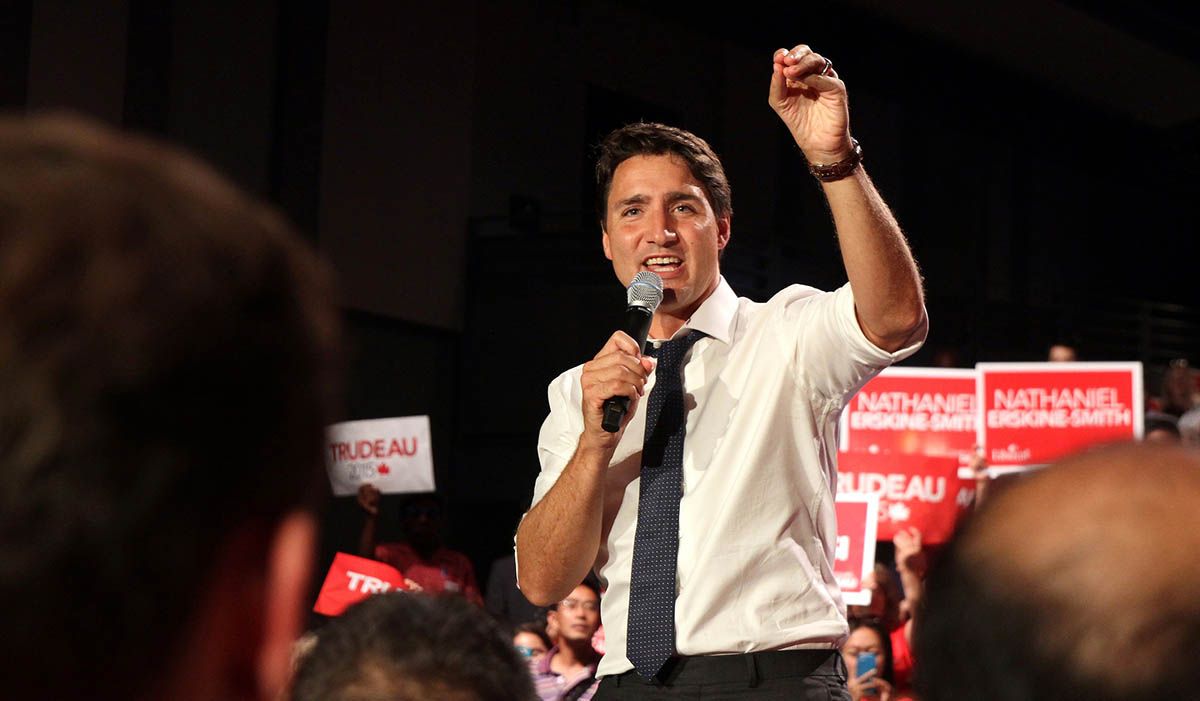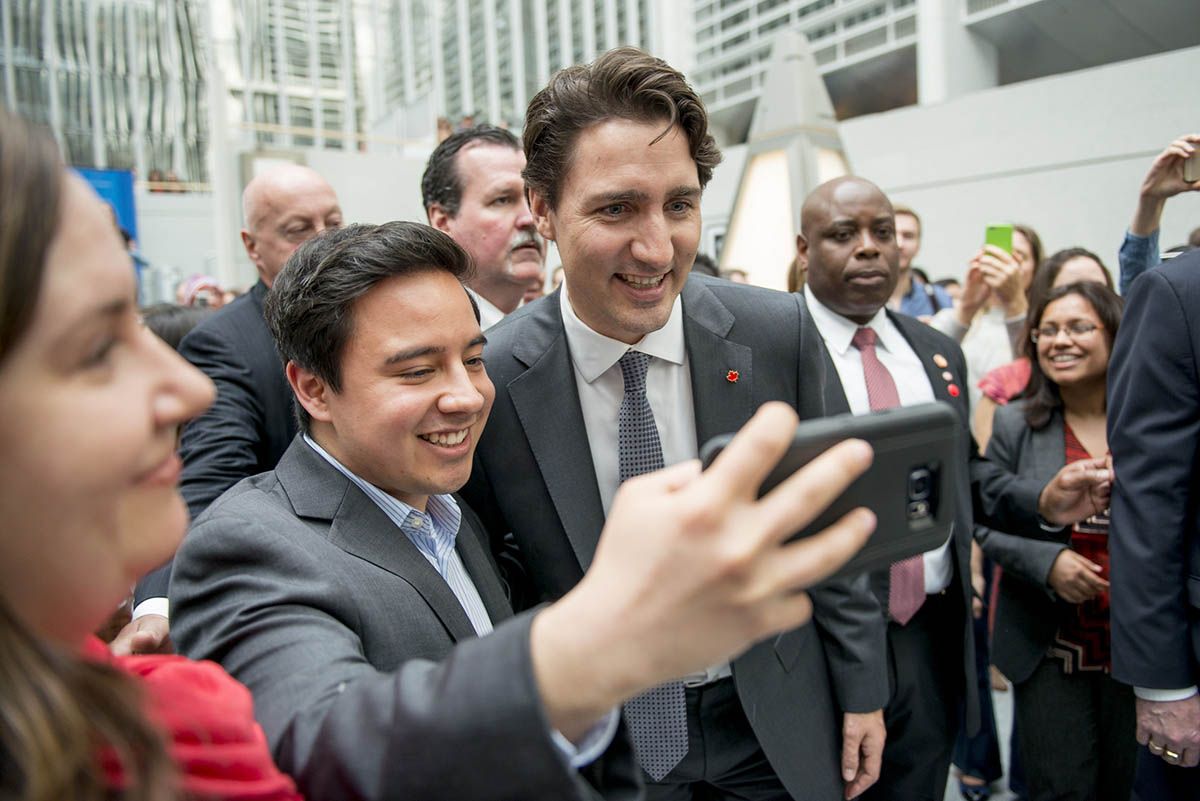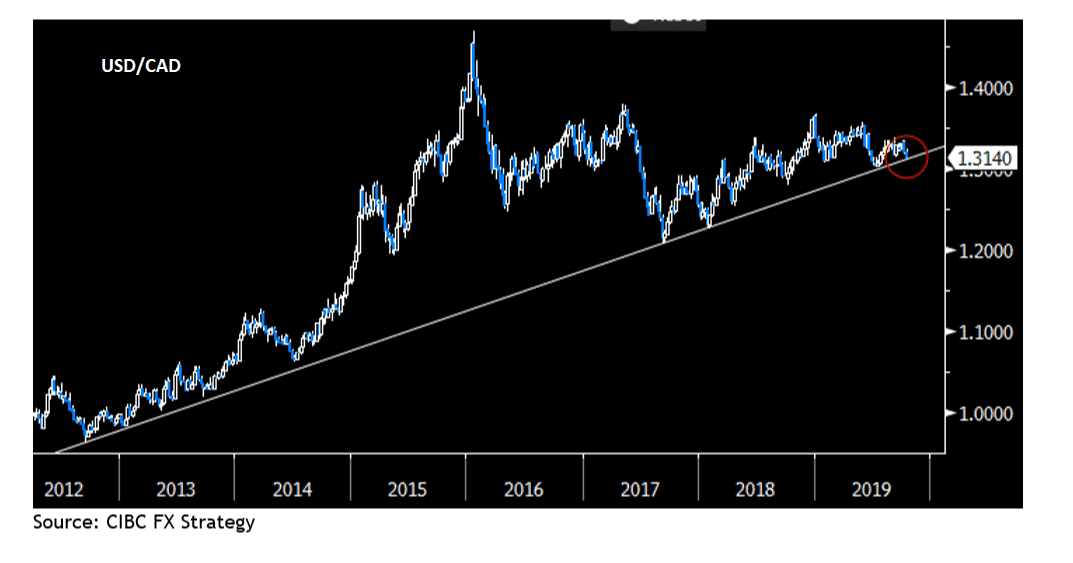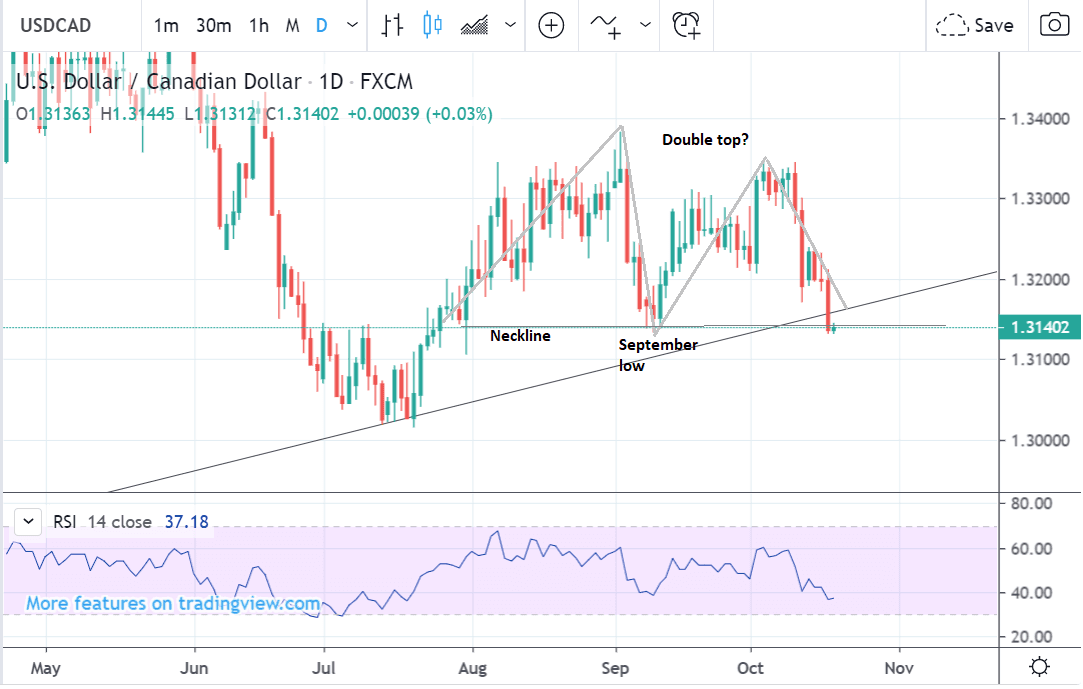Canadian Dollar's Brightening Outlook Challenged by Election Headwinds

Alex Guibord, Accessed Flickr, reproduced under Creative Commons licensing.
- Canadian economy is humming along nicely
- Canadian Dollar should be higher say analysts
- Political risks a headwind ahead of election
The Canadian Dollar climbed to an 11-week high versus the U.S. Dollar this week, after gaining 0.54% since Wednesday and the gain over the past month now stands at a percent.
We find there are a number of factors that should keep the Canadian currency supported going forward, but the potential for a bout of political uncertainty on the horizon poses one notable headwind that might keep the increasingly bullish currency restrained.
Whilst geopolitical drivers have always been factors in the Canadian Dollar’s valuation due to the country’s heavy reliance on oil, there are some fundamental domestic reasons to expect a period out outperformance by CAD.
Recent employment data has been very positive, inflation is at trend, the manufacturing sector is bearing up well in a difficult climate and Canada was one of only two leading economies not to have its 2019 growth forecasts downgraded by the IMF in its recent World Economic Outlook.
The latest labour market report, for example, showed the unemployment rate falling to 5.5%, almost back down to May’s all-time historic low of 5.4% after the economy added 57k new jobs in September, following 81k added in the previous month of August.
Canadian manufacturing data has bucked the global trend of weakening results due to trade tensions. Factory sales in Canada increased by 0.8% in August from July (mainly due to higher car sales), data from Statistics Canada showed. Analysts had forecast a 0.6% increase.
Inflation in most of the developed world is stuttering due to poor growth but Canadian inflation continues to come in at ‘just right’ with the latest data showing 1.9% inflation in September, which whilst a miss of the 2.1% is still in the Bank of Canada’s (BOC) goldilocks’s zone around 2.0%.
This now means the BOC is even less likely to cut interest rates in order to help stimulate the economy than it was before, and if this is the case it will stand out from the rest of G10 central banks as one of the few which have not had to ease in 2019.
This is benign for CAD since lower relative interest rates tend to weigh on a currency because they reduce foreign capital inflows due to investors preferring jurisdictions offering better returns.
As a result of Canada’s economic outperformance and neutral monetary policy many analysts are now arguing the Canadian Dollar should by rights be higher.
“The CAD is making hard work of what should be a pretty supportive backdrop, in our opinion, with last week’s positive employment report fresh in our minds still,” says Shaun Osborne, chief FX strategist at Scotiabank.
The market’s high expectations of the U.S. central bank cutting interest rates when it meets on October 30 also means that U.S. and Canadian short-term commercial interest rates are diverging in Canada’s favour, with U.S. marching lower whilst Canada’s keep the high-ground.
“CAD data continues to surprise, and the FX market can only ignore the fact that CAD front-end rates is trading above the US for so long. This may cause the break lower in USD/CAD if it happens,” says Bipan Rai, an analyst at CIBC World Markets.
Indeed, from a technical perspective the USD/CAD pair looks to be in a precarious position as it drills down through a major long-term trendline. For technical analysts breaches below long-term trendlines can mark major shifts in trend.
“There is a significant long-term trend line that comes in around the 1.3115 area. – A break below the aforementioned trend line is VERY important and signals that our strategic view may need to be reassessed. The options market is basically telling you that this scenario is under-priced.”
Not only that, but Thursday’s break below the September lows was another significant technical moment as it represent a break below the neckline of a potential bearish double top pattern.
This doesn’t just bode ill for USD/CAD but for all other CAD pairs too, including GBP/CAD, since in FX markets it is often the case that the USD pair tends to influence all other crosses.
Time to move your money? Get 3-5% more currency than your bank would offer by using the services of a specialist foreign exchange specialist. A payments provider can deliver you an exchange rate closer to the real market rate than your bank would, thereby saving you substantial quantities of currency. Find out more here.
* Advertisement
Political Uncertainty a Brake?

Above: File image of Justin Trudeau. Copyright: World Bank Photo Collection. Accessed Flickr. Reproduced under Creative Commons licensing
One possible explanation for the misvaluation and lack of CAD upside is political uncertainty as the Canadian general election approaches on Monday, October 21.
Currencies traditionally hate political uncertainty so the fact CAD is not rallying should come as no surprise.
This is especially true since Opinion polls are currently showing Trudeau’s liberals neck-and-neck with the other main big party, the conservatives in the lower 30s, which suggests a hung parliament according to experts.
"Latest polls suggest that the Federal elections in Canada are likely to yield a minority government. The implications for the energy sector will drive market reaction but risks for the loonie appear tilted to the downside," says Francesco Pesole, FX Strategist with ING Bank.
Advance voting for Canada's Federal election on Monday has already begun, but the final results won’t be known until after the polls close on 21 October.
At the beginning of the campaign both the main parties could have commanded a governing majority but this is not the case now.
“At the beginning of the campaign both parties veered into 35-36% and hypothetically they could have formed a majority government, but now with both the front-running parties cycling down into the low 30s it is statistically out of reach,” says Nik Nanos a Canadian public opinion pollster in an interview with CTV News.
Monday night’s election may give an uncertain result which could weigh on the Canadian Dollar in the short-term.
"Between a Liberal-led minority and a Conservative-led minority, we expect the first one to be more CAD-negative," says Pesole. "The probability-weighted impact of the elections on USD/CAD appears to be moderately positive. In other words, the balance of risks for the loonie appear tilted to the downside."
Although the Conservatives under Andrew Sheer are poised to win the most seats, convention has it that the present incumbent, Trudeau, should also be given the opportunity to form a government if he can knit together a coalition.
“Justin Trudea, as the outgoing or last Prime Minister, had the confidence of the house, when it reconvenes after an election usually if the PM has a chance to form a government the convention has been that that person would be invited to form a government,” says Nanos, “That said, when you are way behind all the other parties in terms of the number of seats the incumbent foregoes that privilege or right.”
Barack Obama’s recent endorsement of Trudeau may help the Canadian leader who has suffered a loss of popularity after the blackface photos scandal, increasing liberal voter turnout, says Nanos.
Whilst Trudeau’s antics may have got him into trouble with some voters, his stewardship of the economy has been exemplary, according to Bloomberg.
Since Trudeau took office in 2015 “Unemployment fell faster than in any developed nation during the 40 months that ended in May, to its lowest level since 1976. Gross domestic product accelerated to a pace second only to the U.S. rate. The stock and bond markets proved world beaters with the best returns and most stability,” says Bloomberg’s Mathew A. Winkler.
So whilst there is a threat of uncertainty, Trudeau is still in with a fighting chance to win, and if he does the Canadian Dollar would probably enjoy a renaissance on the back of easing uncertainty and faith in his ability to manage the economy.
"We believe there is a high potential for surprises, but the market impact will most probably depend on if one of the two larger parties - prime minister Justin Trudeau’s Liberals or Andrew Scheer’s Conservative party wins a majority. However, the implied probability from recent polls suggests that a minority government seems to be the most likely possibility," says Pesole.
Time to move your money? Get 3-5% more currency than your bank would offer by using the services of a specialist foreign exchange specialist. A payments provider can deliver you an exchange rate closer to the real market rate than your bank would, thereby saving you substantial quantities of currency. Find out more here.
* Advertisement






